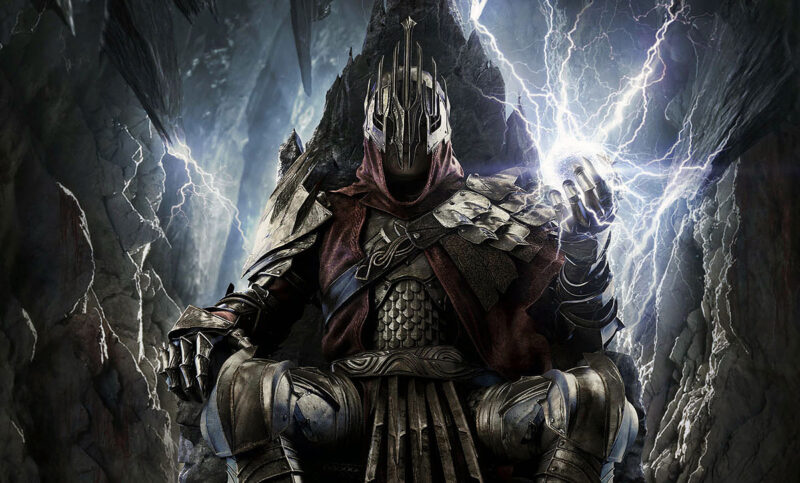AFTERMATH
After his decisive defeat in the War of the Last Alliance, the Dark Lord Sauron found himself severely diminished in power. Despite this setback, his malevolent spirit endured, shackled to the One Ring, which, in an ironic twist of fate, fell into the hands of the Dunedain, Isildur, the reigning monarch of both Gondor and Arnor. Incapable of directly pursuing the elusive Ring and exacting his revenge, Sauron lurked in the shadows for centuries, meticulously regaining his strength and methodically plotting his inevitable resurgence to dominion.
Although the Dark Lord suffered defeat, many of his minions, including orcs, trolls, and other nefarious servants, survived the clash and scattered across the continent, sowing chaos wherever they roamed. In the wake of this upheaval, Isildur, driven by a steadfast commitment to preserve the legacy of the ancient Telperion, planted a second white tree in Minas Tirith. His aspirations for a peaceful settlement in Arnor, however, were thwarted when orc raiders ambushed him and his three sons near the Gladden Fields.
Refusing to allow the One Ring to fall into enemy hands, Isildur’s sons valiantly sacrificed themselves to stall the orc onslaught, allowing their father to escape through the treacherous currents of the Anduin River. Despite facing the mighty torrent, Isildur was tragically separated from the Ring and eventually succumbed to a hail of arrows from relentless orc pursuers. With the line of the Dunedain extinguished and the orcs oblivious to the Ring’s concealed presence, the One Ring sank to the riverbed, remaining lost to the world for over two millennia, awaiting its new owner.
Simultaneously, the demise of Isildur and his sons reshaped the leadership in Gondor, with Meneldil, nephew of the High King, assuming the mantle of ruler. In Arnor, Valandil, Isildur’s fourth offspring, ascended to power. This division marked the inception of two distinct dynasties: the descendants of Anarion and his son Meneldil guided the people of Gondor for two millennia, while Isildur and his son Valandil established a bloodline that wielded authority over a united Arnor for a fleeting few centuries before splintering into smaller realms.
Beyond the borders of Gondor and Arnor, the middlemen, descendants of those humans who did not dwell in Numenor during the Second Age, dispersed throughout the Westlands. Those residing near Gondor and Arnor intermingled with the Dunedain, while those inhabiting the Greenwood region became known as the Northmen. To the West and South of the Misty Mountains, the tribal Hillmen, later identified as the Dunlendings, spoke a distinct language, setting them apart from their fellow middlemen. Unfortunately, this linguistic difference denied them friendship and aid, as they were not acknowledged as kin to the Dunedain of Numenor.
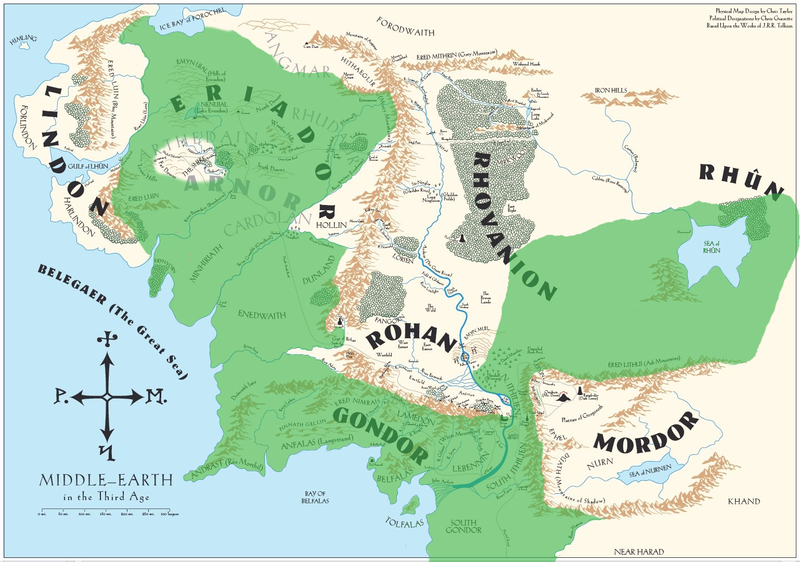
Thriving as a wild people for millennia, the Dunlendings expanded south and east towards the White Mountains. Some adventurous souls ventured north, departing their more primitive homelands to settle in Eriador, where they founded the village of Bree. While journeying toward the Sea of Rhun and beyond, the myriad tribes and nations of the Easterlings, despite their weakened state following the War of the Last Alliance, steadily rebuilt their strength, their relentless ambition to conquer the West undiminished.
Similarly, the tale unfolds for the Haradrim of the South, dwelling beneath the sway of the formidable city-state Umbar, where the black Numenoreans devoted to Sauron continued to wield authority. While the Dark Lord still retained scattered allies across the continent, Mordor itself eluded his grasp, guarded vigilantly by the Kingdom of Gondor, leveraging Minas Ithil, the Towers of the Teeth, and the Tower of Cirith Ungol to maintain a watchful eye over the land.
During much of the Second Age, the dwarves of Durin’s folk, secluded within the Misty Mountains, flourished in Khazad-dûm, amassing immense wealth through their mining endeavors. However, following the defeat of Sauron, the loss of Mordor, and the dispersion of his armies, hordes of wandering orcs now roamed the Westlands, some finding residence in the gray and Misty Mountains.
Established as a sanctuary for the Noldor elves of Eregion, Imladris, or Rivendell, remained under the rule of Elrond Half-elven. In the year 109 of the Third Age, Elrond united with Celebrian, the daughter of the Lord and Lady of Lothlorien. Celebrian later gave birth to twin sons, Elledan and Elrohir, in 130 TA, while their younger sister, Arwen, graced the world a century later in 241 TA.
On the western shores, the Laiquendi, Noldor, and Sindar elves of Lindon lived under the governance of Lord Cirdan. Their days were dedicated to crafting ships in the harbor of the Gray Havens, extending the offer of passage to the undying lands of the West to any of their kin who sought it. Meanwhile, other Noldor and Sindar elves coexisted with the Silvan in Lothlorien. Initially led by King Amdir until his demise in the Battle of Dogorlad during the War of the Last Alliance, the mantle of rulership passed to his son Amroth.
A LOST LOVE IN THE BELEGAER
Amroth’s heart was captivated by the enchanting maiden Nimrodel, a Silvan Elf who harbored resentment toward the Sindar and Noldor, holding them accountable for Middle-earth’s wars. Despite the Sindar lineage of Amroth, Nimrodel reciprocated his love but insisted on marrying only if they departed for a new land where true peace could be found. Recognizing the impossibility of such a life in Middle-earth, Amroth relinquished his kingship, and they embarked for Edhellond in Gondor, intending to board a ship to the undying lands.

Their journey, however, encountered hardships, leading to their separation. Amroth arrived first at the shore, waiting aboard a ship ready to set sail, only for a storm to force an abrupt departure, leaving him horrified. In his despair, he threw himself into the sea, attempting to reach the shore. As for Nimrodel’s fate remains uncertain, lost to history after reaching Edhellond and discovering Amroth and the ship were gone. With the King’s demise, leadership in Lothlorien passed to the Sindar Celeborn and Noldo Galadriel, while other Silvan or wood elves thrived in the Greenwood forests under the Sinda King Thranduil.
EASTERLINGS AND HARAD INVASION
By 492, some Easterlings felt emboldened to launch invasions against their adversaries, resulting in two assaults on Gondor within a 60-year span. Though the conflict ebbed and flowed, the Dunedain proved indomitable, steadily pushing the invaders back. In the aftermath, King Tarostar adopted the name Romendacil, signifying East Victor, after a resounding triumph in 500 TA.
The Easterlings seemed vanquished for four decades until they unleashed another invasion in the year 541, achieving a significant triumph by slaying King Romendacil on the battlefield. However, his son, Turambar, continued the struggle with even greater ferocity than his father. By 550 TA, he successfully pushed the Easterlings beyond the Sea of Rhun, reclaiming those lands for Gondor. Having repelled the invaders and solidified their dominion over the East lands, the Kingdom of Gondor ascended to unprecedented power.
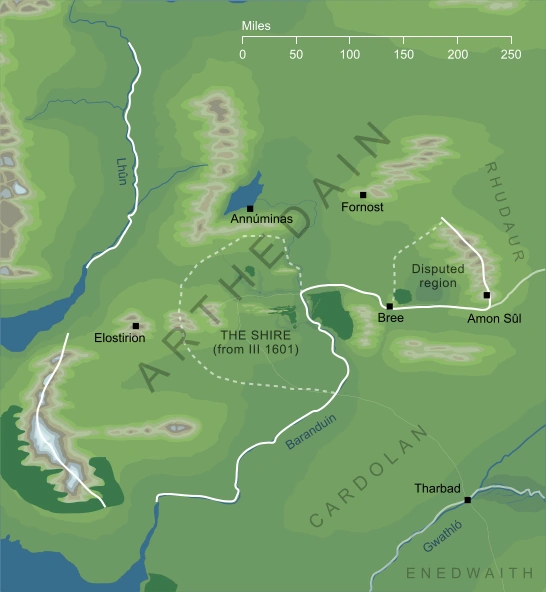
Meanwhile, their brethren in Arnor teetered on the brink of civil unrest following the demise of King Earendur in 861 TA, his three sons engaged in a war over inheritance. The eldest seized the realm of Arthedain, while his siblings established the kingdoms of Cardolan and Rhudaur.
Ascending to the throne in 913, King Earnil of Gondor pursued a policy of expansion, constructing a formidable fleet. This naval force was pivotal in conquering the city of Umbar in 1933 TA. Tragically, Earnil was lost at sea a few years later, leaving his son Ciryandil as King during a time of war. Ciryandil spent the majority of his reign defending Gondor’s conquest of Umbar from the black Numenoreans and their Haradrim allies. His life was cut short during a siege of the city in 1015 TA; thus, his son, Hyarmendacil, assumed the throne, resolute in ending the southern threat.
ARRIVAL OF ISTARI
Throughout the epochs of the Third Age, the Valar grew increasingly uneasy, contemplating the possibility that Sauron might still pose a threat, given his life force tethered to the One Ring, lost but never annihilated. Although elves, men, and dwarves had united to defeat the Dark Lord in the Second Age, many believed the menace had passed and remained unprepared for his potential return.
They soon realized that direct intervention resulted in profound repercussions worldwide. While their strength proved sufficient to defeat and obliterate the first Dark Lord Melkor, it also led to the reshaping of continents, resulting in countless deaths and widespread devastation. Recognizing the peril of direct involvement, the Valar opted to create the Istari, a team of five Maiar fashioned as aged wizards entrusted with the task of organizing and preparing Middle-Earth for the looming conflict against the Second Dark Lord. Acutely aware of Sauron’s history as a once faithful Maia, akin to the Istari, the Valar understood the temptations that awaited them. Surrounded by beings devoid of magical prowess, the wizards could easily exploit their powers to assume kingly roles.
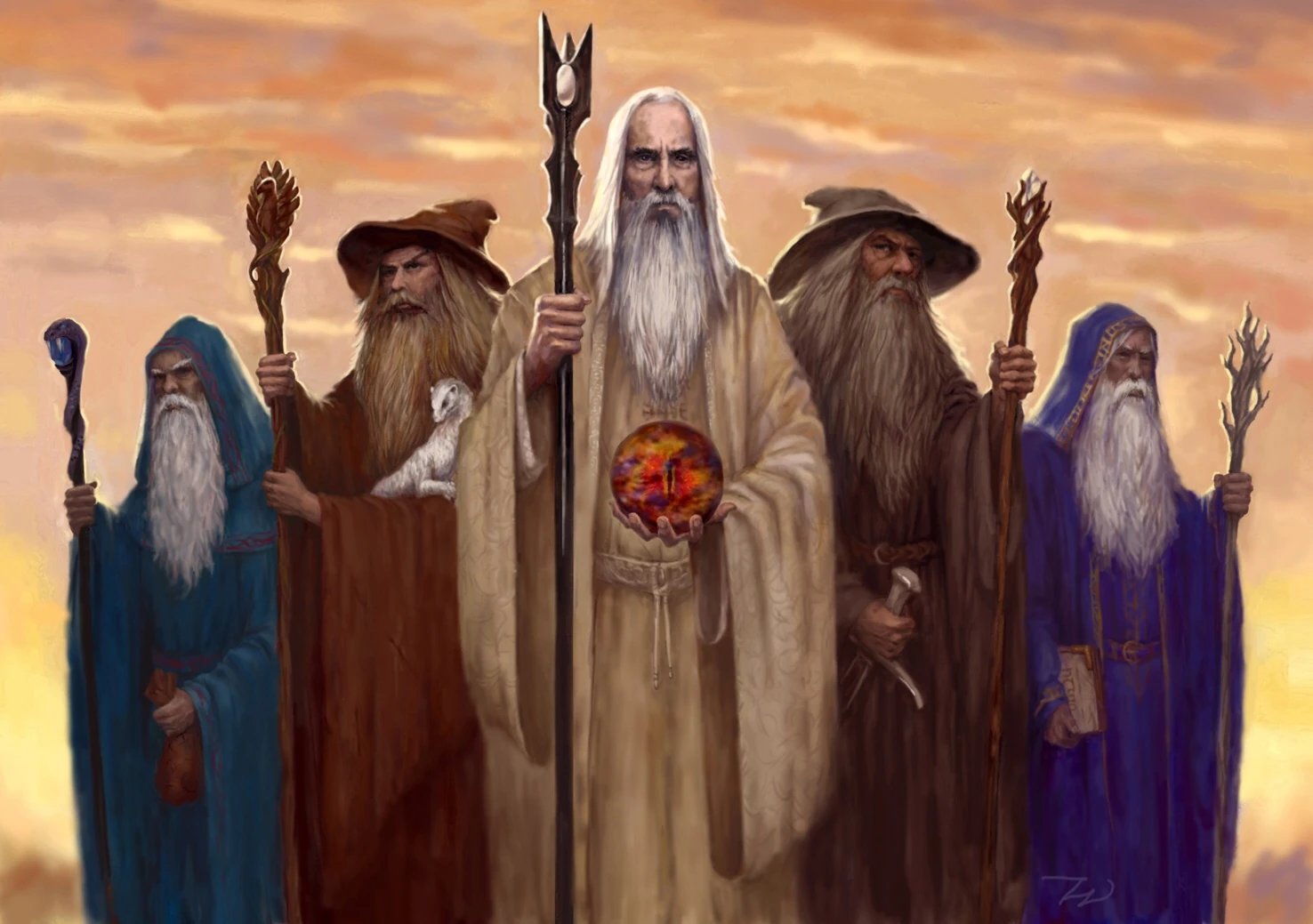
Amplifying this threat was the potential for one of the Istari to come into possession of the One Ring, succumbing to its corruption and transforming into yet another Dark Lord with aspirations of conquering Middle-Earth. To mitigate this danger, the Valar imposed strict restrictions on the Istari, prohibiting overt use of their powers or direct confrontation with the Dark Lord. The wizards took the form of elderly men, enabling them to converse with elves, humans, and dwarves as equals.
Arriving around the year 1000, the blue Wizards Alatar and Pallando assumed control over the eastern regions of Middle-Earth. They were briefly joined by Saruman, the white wizard and leader of their order, who later returned West. There, he collaborated with Gandalf the Gray to foster and maintain alliances. Gandalf, the wisest of the Istari, was also the most humble and mild-mannered, drawing inspiration in compassion from Vala Nienna, the Lady of Mercy.
In preparation for their mission, Gandalf spent centuries traversing Middle-Earth, familiarizing himself with its people. This endeavor allowed him to delve into their history and politics, cultivating numerous friendships and contacts that would prove instrumental in the eventual victory. The final member, Radagast the Brown, was sent by the Vala Yavanna. His dedication lay in the preservation of wildlife, participating in the affairs of his colleagues only when absolutely necessary.
RISE OF DOL GULDUR AND THE WITCH-KING
As the decades unfolded and the Istari dispersed across Middle-Earth, an ominous evil seized control of Amon Lanc. This compelled the wood elves to relocate further north, where they established the Elvenking’s Hall. Amon Lanc, renamed Dol Guldur, became the dominion of a being known as the Necromancer. His corruption extended throughout the Greenwood, henceforth named Mirkwood. Unbeknownst to many, the Necromancer was Sauron, necessitating a base of operations to mobilize his servants and dispatch them on missions to weaken his enemies. Fearing the malevolence seeping into the forests, numerous nearby inhabitants, like the Harfoot clan of the Hobbit people, migrated away. The Harfoots left the valley of the Anduin, crossed the mountains, and settled in Eriador. Over the passing centuries, other Hobbit clans, such as the Fallohides and Stoors, joined the Harfoots, with many ultimately finding their homes in and around the Shire.
Simultaneously, in the realm of men, the Dunedain achieved a momentous triumph against the Haradrim of the South. King Ciryaher emerged from Umbar, leading his forces to conquer their last formidable adversary, propelling Gondor to the zenith of its power during the golden age. Renamed Hyarmendacil, denoting South Victor, the Last of the Great Ship Kings ruled until his demise in 1149, succeeded by his son, Atanatar the Second. Indifferent to the realm’s administration, Atanatar reveled in the power and wealth he inherited, unwittingly contributing to the decline of Gondor’s golden age and the gradual waning of its influence. His successor, Narmacil, shared his disinterest in ruling the realm.
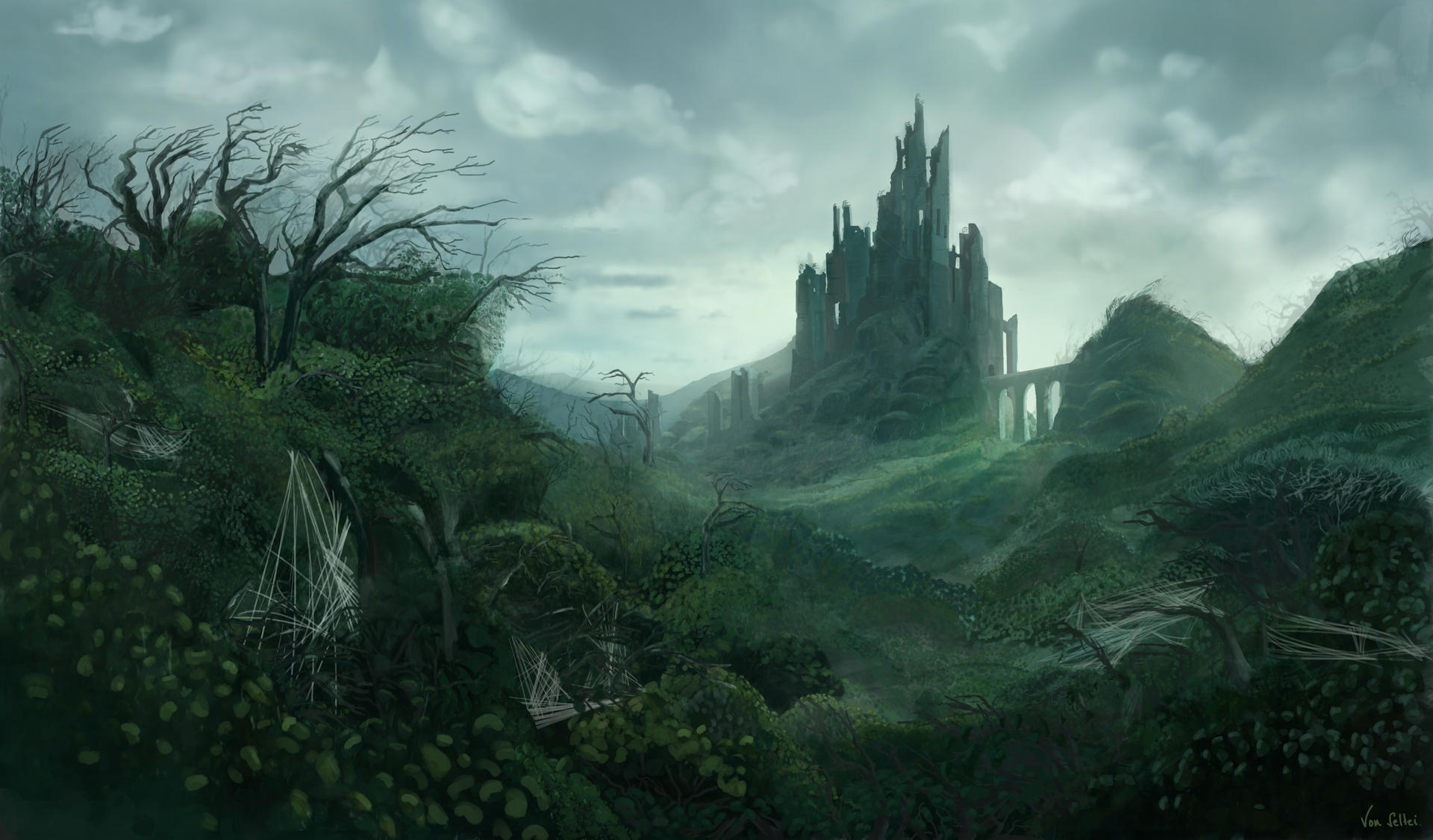
Fortuitously, they had Narmacil’s nephew, Minalcar, a capable administrator and military commander named Regent and, entrusted with the Kingdom’s governance. Upon learning of a rebellion in the East, Minalcar collaborated with the Northmen tribes of Rhovanion, residing in and around the Greenwood forest, to quell the uprising. Following the defeat of the Easterlings, Minalcar adopted the name Romandacil and returned home, having forged numerous friendships and alliances with the men of the North.
In 1250 TA, the Regent dispatched his son, Valacar, as an ambassador to reside under Vidugavia, the self-styled King of Rhovanion and leader of their largest tribe. Decades later, in 1294, when King Narmacil passed away childless, his older brother Calmacil ascended to the throne but was too old for the position. Consequently, he appointed his son, Romandacil, as Regent until his death in 1304. After more than 50 years of ruling Gondor, Romendacil finally inherited the title of King, which he held until his passing in 1366.
While the Dunedain of Gondor emerged from a prosperous golden age, their kin in Arnor faced division and strife, locked in constant warfare. Exploiting this vulnerability, the Witch-King of Angmar established himself in the fortress of Carn Dum, amassing an army of orcs and Hillmen. Utilizing spies and informants, he further fueled discord in Arnor.
Although the threat he posed was widely feared, few knew he was the leader of the Nazgul and Sauron’s Lieutenant, who had vanished for over a thousand years after the wars of the Second Age. Settled in Dol Guldur, Sauron initiated a long-term strategy to weaken the Dunedain in anticipation of his return to power. The Witch-King positioned himself in the North to utterly destroy the realms of Arnor.
When King Argeleb inherited the rule of Arthedain, there was a fleeting hope for peace as the royal lines of Cardolan and Rhudaur were no more. Argeleb, the last descendant of Isildur with a legitimate claim over the entire Kingdom, faced resistance from Rhudaur, led by the servants of the Witch-King. Rejecting Argeleb’s rule, they pledged allegiance to Angmar. This divergence culminated in the Battle of the Weather Hills, where the Witch-King achieved a significant victory, slaying King Argeleb.
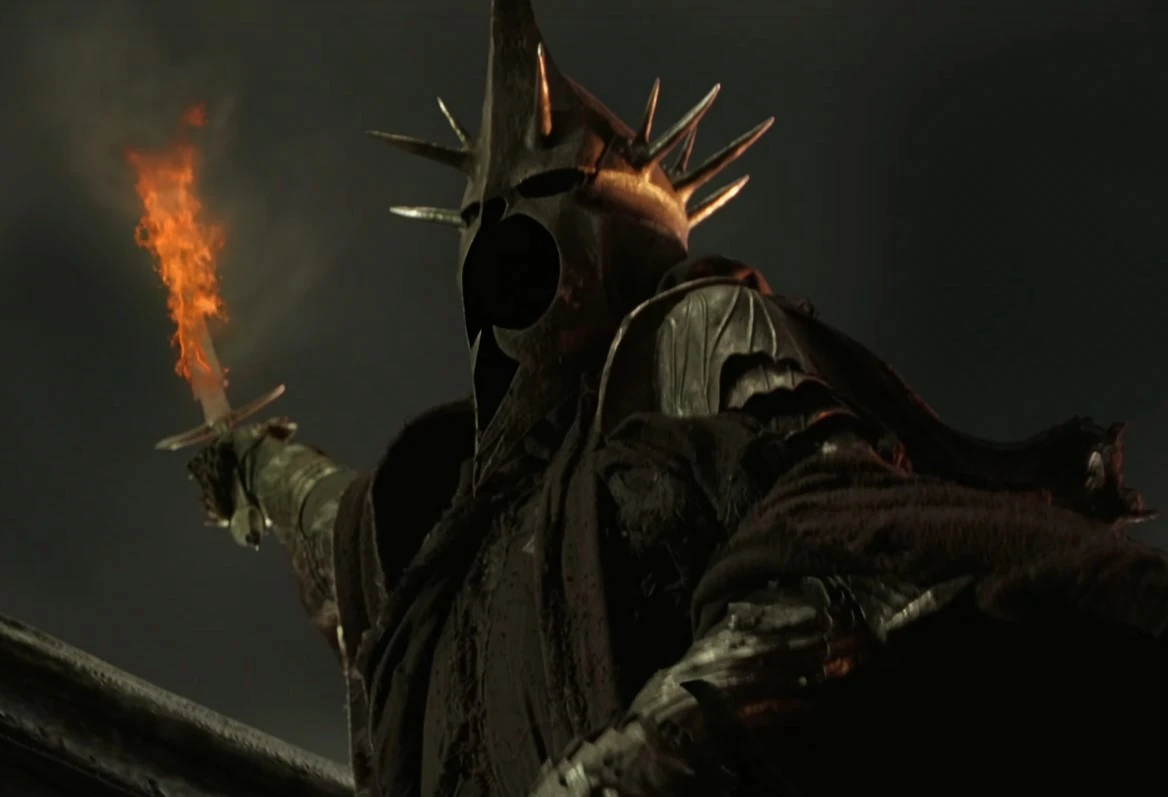
Despite the loss of King Argeleb, his son and heir, Arveleg, carried on the struggle, marshaling reinforcements from Cardolan and elven allies in Lindon. Together, they pushed back the enemy forces and reclaimed the Weather Hills. Establishing a defensive line to anticipate further attacks, the Witch-King temporarily halted his southern advance, redirecting his forces eastward to lay siege to Rivendell. The objective was to crush this ally of Arthedain before it could fully contribute to the war effort.
Although the elves emerged triumphant when Lord Elrond brought reinforcements from Lothlorien to lift the siege, the Witch-King’s larger strategy succeeded. He diverted the elves’ attention and hindered their ability to aid Arnor. With the eastern elves engaged in Rivendell, the Witch-King turned his attention to eliminating Arthedain’s primary ally. He dispatched an army against the frontline forces at Amon Sul in 1409, while another host attacked Cardolan directly.
Securing another significant victory, the forces of Angmar managed to kill both the Prince of Cardolan and King Arveleg of Arthedain. They captured Amon Sul and advanced towards Fornost, occupying Rhudaur and conquering all of Cardolan, save for the capital city of Tyrn Gorthad. However, this proved the limit of the Witch-King’s forces as they faced the elves of Lindon. United with young King Araphor of Arthedain, they launched a counter-offensive, pushing back the enemy at Fornost and liberating Amon Sul. Lord Elrond orchestrated additional reinforcements from Lothlorien, which, combined with those from Lindon, dealt a devastating blow to Angmar, a wound that took centuries to heal.
Sources and Further Information
- Tolkien, J.R.R & Tolkien, Christopher. “The Silmarillion,” Houghton Mifflin Company (2004)
- Tolkien, J.R.R & İpek, Çiğdem Erkal “Translator”. “Yüzüklerin Efendisi,” Metis Yayınları (2007)
- Tolkien, J.R.R & Tolkien, Christopher. “The Children of Húrin,” HarperCollins (2007)
- Tolkien, J.R.R & Tolkien, Christopher. “Beren and Lúthien,” Houghton Mifflin Harcourt (2017)
- Tolkien, J.R.R & Tolkien, Christopher. “The Fall of Gondolin,” Houghton Mifflin Harcourt (2018)
- Orta Dünya – Legendarium Türkiye, YouTube
- Yüzüklerin Efendisi – Orta Dünya, YouTube
- Nerd of the Rings, YouTube
